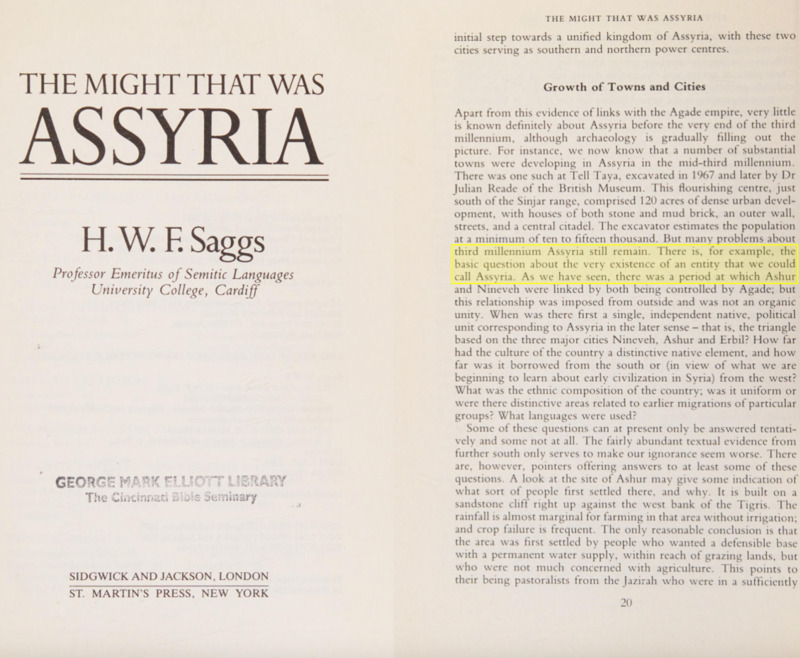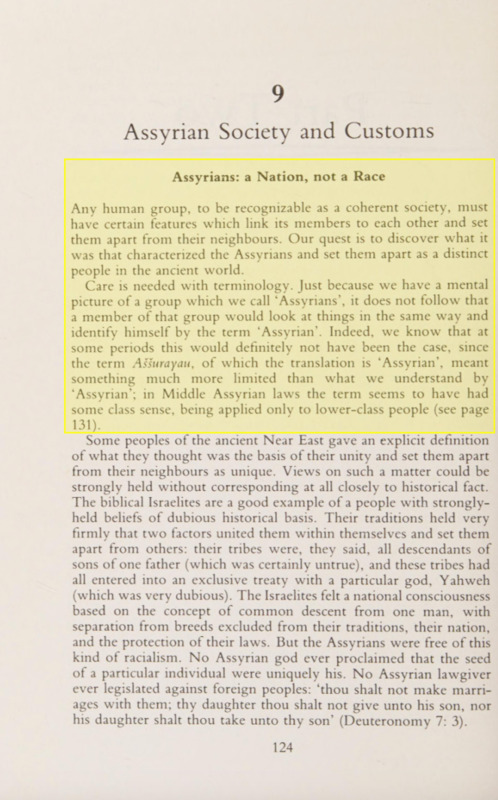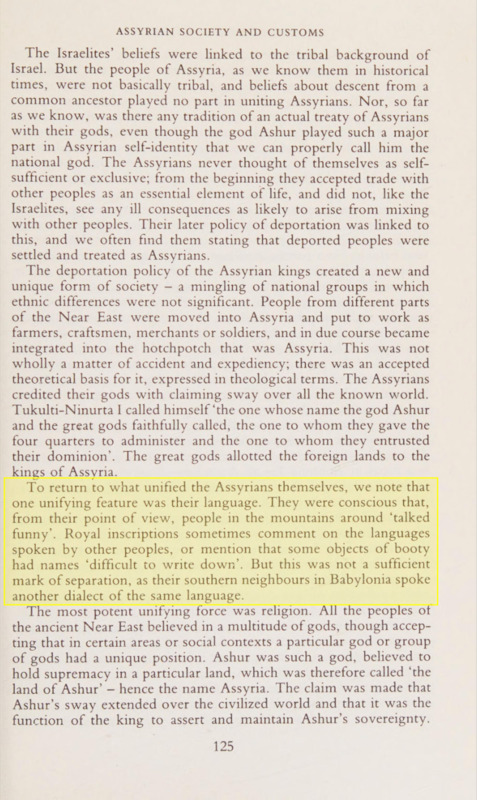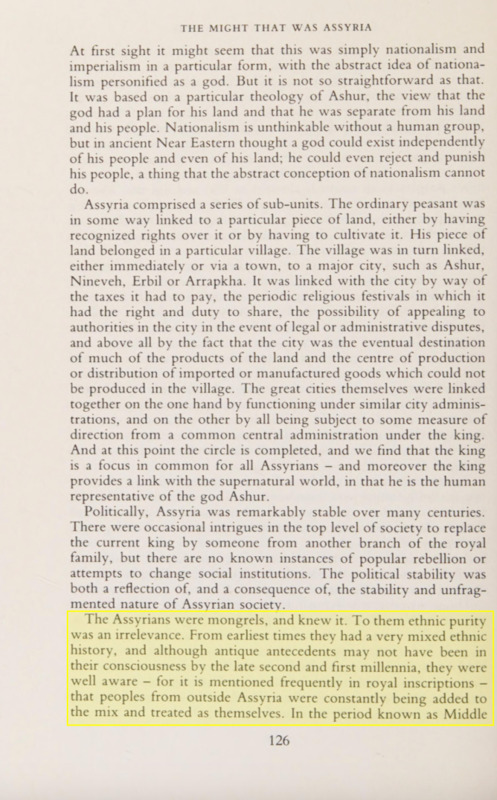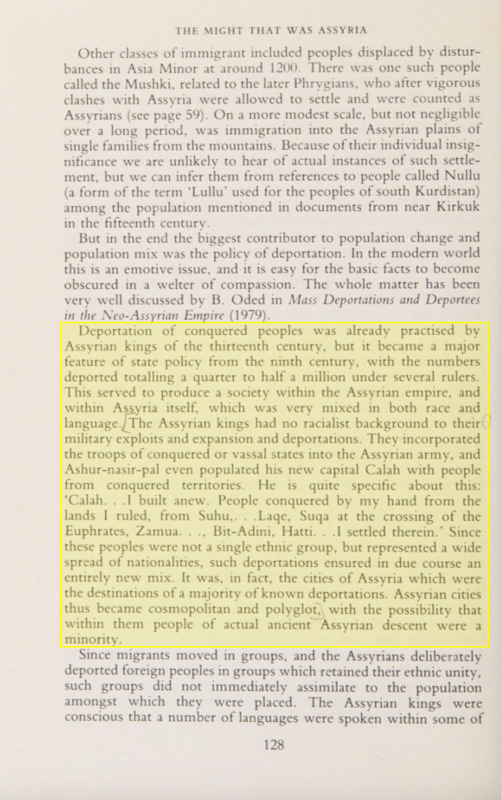-
Title
-
The Might That Was Assyria
-
Creator
-
H. W. F. Saggs
-
Date
-
1984
-
Description
-
Saggs describes ancient Assyria as a state that drew many different peoples into one system. From the 9th century BCE especially, Assyrian kings deported populations from conquered lands and settled them inside Assyria as Assyrians. Cities in the Assyrian heartland became “cosmopolitan and polyglot,” and Saggs adds that there is a real possibility that “people of actual ancient Assyrian descent were a minority” in those cities (p. 128). He notes that whole communities were relocated, new capitals were populated with deportees, and multiple languages were spoken in Assyrian towns.
For Saggs, identity rested not on blood, but on shared institutions. He titles a chapter “Assyrians: a Nation, Not a Race.” His blunt summary is: “The Assyrians were mongrels, and knew it. To them, ethnic purity was an irrelevance.” (p. 126). There were no laws enforcing ethnic separation; outsiders could rise to high office; newcomers often arrived and kept their group cohesion at first, yet over time they entered the Assyrian mix. He emphasizes that Assyrians did not define themselves as a tribe of common descent.
Religion and language were the primary social glue. The unifying language was Akkadian, and the central public cult was that of Ashur. Yet even here Saggs stresses flexibility: a person did not have to worship Ashur to belong in the administration, because the Assyrian pantheon could accommodate gods from other peoples. In plain terms, without Akkadian and the Ashur-centered state religion, there was no strong, single feature that bound everyone into one “ethnic” Assyrian people.
Saggs also looks back to the earliest periods and cautions against assuming a clearly bounded ethnic community from the start. He raises “the basic question about the very existence of an entity that we could call Assyria” in the mid–third millennium (p. 20). Across the second and first millennia, he traces repeated immigrations and deportations—Hurrian, Aramean, and others—that produced a long-term, mixed population in northern Mesopotamia; some districts later became predominantly Aramean. In his narrative, the countryside that survived the empire’s collapse was made up of villagers and peasants shaped by this mixed history, not a single, self-contained ethnic line.
Taken together, Saggs’ account presents ancient Assyria as a political and cultural umbrella rather than an ethnicity in the modern sense: a realm that intentionally integrated diverse groups, called them “Assyrians,” and held them together mainly through administration, Akkadian language, and the public cult of Ashur, with ethnic purity explicitly dismissed as irrelevant.
-
Language
-
English
-
Publisher
-
The Might That Was Assyria, H. W. F. Saggs, 1984.
-
archive.org
-
Subject
-
Assyria

